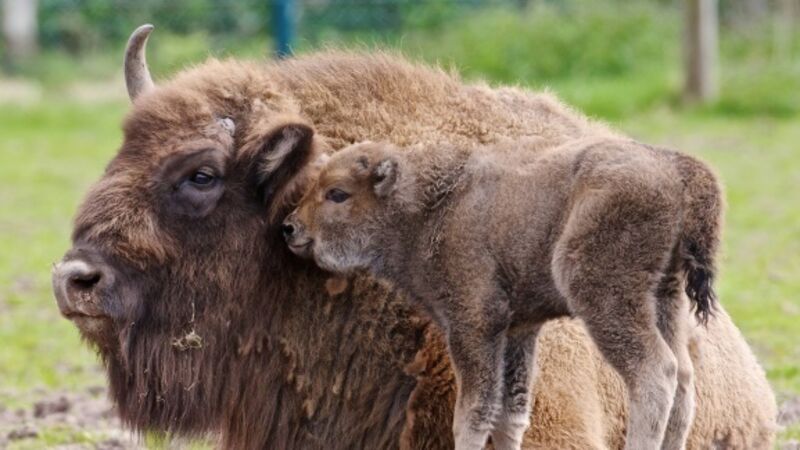Fota Island returns two rare young bison to the wild

Two rare European bison who were born and reared in Fota Wildlife Park in Cork are among six captive-bred female bison who have been relocated to the wild in Romania.
They have been monitored using radio-collars as they roamed through the Vanatori Neamt Nature Park since their arrival there last Wednesday.
The park is located in the Carpathians, a vast mountain range spanning six countries including Romania, Hungary, and Czech Republic.
The Carpathians is the last relatively unspoiled area of this size in Central and Eastern Europe, and provides an important refuge for many rare and endangered species.
The captive-bred bison have joined an existing herd of European bison, who were introduced into the park from captive populations in Germany, Sweden, and Switzerland.
And yesterday, it was announced that the reintroduction of the latest arrivals has been a complete success.
The overall project aims to re-establish a viable and self-sustaining population of European bison and increased biodiversity in the region.
Fota Wildlife Park worked on the conservation project with the Aspinall Foundation and animal parks in the UK including Highland Wildlife Park in Inverness, Scotland, Port Lympne and Howletts Wild Animal Parks in Kent.
Fota’s park director, Sean McKeown, said they were delighted to be involved in the project.
“It’s great to see two young bison we have reared form part of this important reintroduction programme for this species that was once extinct in the wild in Romania.” he said.
“In April 2008, Fota Wildlife Park sent its first European bison back to the wild to Bialowieza National Park in Poland where their descendants are roaming through the Bialowieza Forest.”
European bison were driven to extinction in the wild in the early 20th century as the result of habitat destruction and severe hunting.
Through the captive breeding of the species in European zoos and a series of reintroduction projects, the population has gradually begun to increase and the International Union for Conservation of Nature subsequently reclassified European bison as endangered, rather than critically endangered.
The translocation of the bison has been made possible by a partnership between the Aspinall Foundation, the European Bison Breeding Programme, and the European Wilderness Society.













